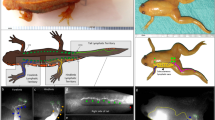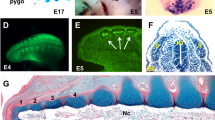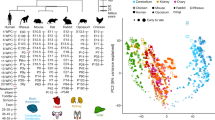Abstract
IN mammals lymph vessels draining the abdominal viscera and lower half of the body converge just below the diaphragm to form the thoracic duct, a single major channel which ascends through the chest and enters the venous system on the left side of the neck. Although it is recognized that the lymphatic system collects plasma protein, absorbed lipid and immunologically active cells and protein, the physiological advantage of transporting these substances from below the diaphragm through the chest to the neck is still obscure. It is usually conceded, for example, that surgical ligature of the duct at any point in its course is harmless and entirely without sequelae. This report clarifies the functional significance of the thoracic duct by tracing its evolutionary development to selection of a mechanism which pumps lymph into blood.
This is a preview of subscription content, access via your institution
Access options
Subscribe to this journal
Receive 51 print issues and online access
$199.00 per year
only $3.90 per issue
Buy this article
- Purchase on Springer Link
- Instant access to full article PDF
Prices may be subject to local taxes which are calculated during checkout
Similar content being viewed by others
References
Silvester, C. F., Amer. J. Anat., 12, 447 (1912).
Wislocki, G. B., J. Morphol. Physiol., 46, 317 (1928).
Azzali, G., and Dido, L. J. A., Anat. Rec., 153, 149 (1965).
Enelolion helvum helvum—Africa, Hippsideros armiger—Africa, Bmshyphylla cavernarium—Virgin Islands, Pteropus (Flying Fox)—Madagascar.
Darwin, C., in The Descent of Man, 11, 25 (Appleton, New York, 1892).
Blalock, A., Robinson, C. S., Cunningham, R. S., and Graz, M., Arch. Surg., 34, 1049 (1937).
Dumont, A. E., and Mulholland, J. H., Ann. Surg., 156, 668 (1962).
Dumont, A. E., Clauss, R., Reed, G., and Tice, D., New Engl. J. Med., 269, 949 (1963).
Warren, M. F., and Drinker, C. K., Amer. J. Physiol., 137, 641 (1942).
Author information
Authors and Affiliations
Rights and permissions
About this article
Cite this article
DUMONT, A., RIFKIND, K. Evolutionary Significance of the Thoracic Duct. Nature 219, 1182–1183 (1968). https://doi.org/10.1038/2191182a0
Received:
Issue Date:
DOI: https://doi.org/10.1038/2191182a0
This article is cited by
-
Ovarian and uterine lymphatic drainage in Australian flying-foxes (genus Pteropus, suborder Megachiroptera)
Cell and Tissue Research (1995)
-
Evolutionary Significance of the Thoracic Duct
Nature (1968)
-
Evolutionary Significance of the Thoracic Duct
Nature (1968)
Comments
By submitting a comment you agree to abide by our Terms and Community Guidelines. If you find something abusive or that does not comply with our terms or guidelines please flag it as inappropriate.



